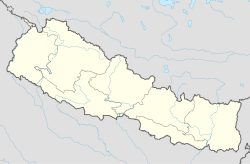
| Pashupati Aryaghat | |
|---|---|
Nepali: पशुपति को आर्य घाट | |
 | |
| Religion | |
| Affiliation | Hinduism |
| District | Kathmandu District |
| Province | Bagmati Province |
| Location | |
| Country | Nepal |
| Geographic coordinates | 27°42′37″N85°20′57″E / 27.710292079805274°N 85.34909817233675°E |

Pashupati Aryaghat is a ghat located near Pashupatinath Temple, Kathmandu, Nepal. It is one of the most famous ghats in Nepal, notably used for open-air cremations, and also the site of an electronic crematorium. [1]

